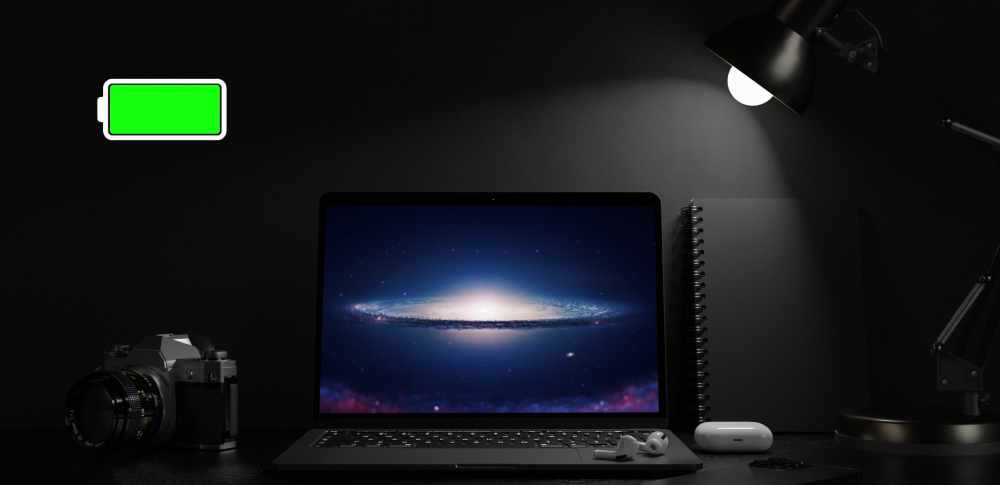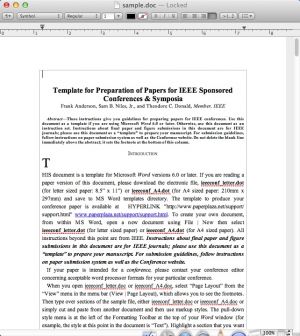 How to Maximize Battery Life on a MacBook
How to Maximize Battery Life on a MacBook
Extended battery life is one of the things MacBook users can enjoy, compared to the owners of other notebook manufacturers. But, like every other battery, no matter how good it is, the MacBook battery degrades in time and keeping its life maximized is not a habit that most Mac users have, even though Apple provides its clients with several tools that can help them out.
Well, if you are interested in maximizing your MacBook's battery life, then you might want to take a look at the following tips, some of them provided by Apple themselves.
Monitor your MacBook's battery
First of all, having a tool that will help you efficiently monitor the health your battery is always a good idea. Knowing the current capacity of your battery, how many charge cycles have been performed, the current voltage and other parameters like that is an important aspect that will definitely help you out when maximizing the battery life on your MacBook.
Battery Health Monitor is a free app that will help you do just that. It monitors and displays all the battery health parameters and it even provides you with notifications regarding the state of your MacBook's battery.
Battery Health Monitor
Using this app, or others that are similar, will definitely help you monitor the changes in your power cycle and view the state of your battery in order to determine if it is time to change it or try maximizing its life using the tips that are presented below.
Adjust the brightness of your display
One of the main settings that have a major impact on your MacBook's battery is the screen brightness. Basically, the lower the brightness, the longer your battery with remain charged.
You can easily dim your screen by using the F1 key (and F2 to brighten it) or you can access the "Display" tool that can be found under "System Preferences" (click on the Apple icon from the menu bar). Just make sure that you dim your display to a comfortable level so that you won't struggle to view items on your screen.
Brightness Tool
Use Energy Saver
Energy Saver is another tool that you will find under "System Preferences" and it gives you the ability to modify power management options such as the time your MacBook stays idle before putting your display and computer to sleep or slightly dimming the display when your MacBook is unplugged.
Energy Saver
Turn off Wi-Fi and Bluetooth
Wi-Fi and Bluetooth are two main power consumers on your MacBook, as they constantly search for nearby networks and devices. If you don't need to connect to the Internet or transfer data via Bluetooth, it is recommended that you turn them off. You can easily do that from the menu bar by selecting their icons and turning them off (the same steps should be applyed when turning them back on).
Turn Off Wi-Fi
You can also turn off your Wi-Fi and Bluetooth connections by accessing the "Networks' panel under "System Preferences".
Disconnect peripherals and quit applications
Most peripherals, such as external USB devices (flash and hard drives), SD cards, FireWire and ThunderBolt devices can consume some of your battery's power and it is a good idea to disconnect them when they are not in use.
Also, if you have a SuperDrive integrated into your MacBook, you might want to remove any CDs and DVDs from them, as the drives will periodically spin (draining a bit of power).
It is also a good idea to quit any applications that you might have running in the background and they are not currently in use, as they will still be performing some tasks that will drain power from your battery.
Calibrate your battery
Battery calibration is a process that involves fully charging your MacBook's battery, completely draining it and then fully charging it again. It is recommended to perform this procedure every month, because, by doing this, your Mac will be able to correctly display the battery status and keep it running at maximum efficiency.
Upgrade your operating system
Newer versions of the Mac OS X bring additional tools (like AppNap or Safari PowerSaver on Mavericks) and features that will help you increase your battery's life and come with new technologies that will minimize power consumption.
Conclusion
These are just some of the main tips that will help you maximize the battery life on your MacBook Pro or MacBook Air. Some of these tips will help you keep your Mac charged for a longer period of time, while others will take effect in the long run by slowing the degradation level of your battery.
If you are really concerned about your MacBook's battery life and you find that these tips are not enough, then you should contact Apple Support (AppleCare) or go to your nearest Apple Store.





Comments
Subscribe to comments